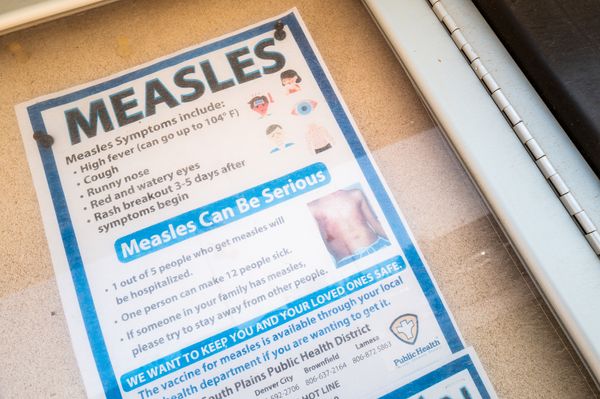
By the end of September, PhotoEspaña, Madrid’s yearly photography festival, will have hosted more than 80 exhibitions featuring the work of nearly 300 photographers and visual artists. Shows by established figures such as Elliott Erwitt, Paloma Navares, David Goldblatt and Erwin Olaf lead a roster that also includes less familiar names, Lúa Ribeira, the Widline Cadet and Consuelo Kanaga among them.
Above: Erwin Olaf’s Narratives of emancipation, desire and intimacy at Fernan Gomez cultural centre. Photograph: La Fabrica. Right: Boris Savelev’s Viewfinder – A way of looking, at the Serrería Belga. Photograph: Oak Taylor Smith
Above: Elliot Erwitt’s The Human Comedy at the Canal Foundation. Photograph: Guy Lane. Right: An Uncertain Light by Gonzalo Juanes at the Canal de Isabel II. Photograph: La Fabrica
The exhibition venues and staging can be as impressive as the photography itself. Erwin Olaf’s pictures are lavishly installed with curatorial aplomb in the subterranean and cavernous Fernan Gomez cultural centre; Boris Savelev’s urban visions occupy the Serrería Belga, an industrial heritage site and former sawmill; and Gonzalo Juanes’s work is displayed over four floors that ascend a 1907 water tower. Elliot Erwitt’s work prints are elegantly displayed at the Canal Foundation.
***
Photographs from Agony in the Garden by Lúa Ribeira/Magnum Photos
Ribeira’s Agony in the Garden explores the rap subgenre drill scene in post-pandemic Spain as her way of addressing the relationships between a contemporary youth movement and job insecurity, environmental crisis, violence and migration.
The project is enhanced by its ambiguity and its use of different modes of storytelling including reportage, vernacular images, screen captures, religious imagery, along with sketches and discarded photographs. “Well, it is a time of contradictions, of growing up in a very soulless world much of the time, with financial crises, and all of that is a little present in the images,” Ribeira says.
***
Incomplete houses, part of a stalled municipal development of 1,000 houses. The funding allocation was made in 1998 and building started in 2003. Officials and politicians gave various reasons for the stalling of the scheme: shortage of water, theft of materials, problems with sewage disposal, problems caused by the high clay content of the soil and shortage of funds. By August 2006, 420 houses had been completed, Lady Grey, Eastern Cape, South Africa, 5 August 2006. Photograph: The David Goldblatt Legacy Trust.
The dethroning of Cecil John Rhodes, after the University of Cape Town capitulated to the demands of students for its removal after faeces had been thrown on the statue, 9 April 2015. Photograph: The David Goldblatt Legacy Trust.
The South African David Goldblatt once commented that “events in themselves are not so interesting to me as the conditions that led to the events”. A magisterial survey of his work at Fundación Mapfre builds a quietly devastating indictment of apartheid. Goldblatt’s status as a white man no doubt opened doors that otherwise would have remained firmly shut, but so too did his aspiration to objectivity, honesty and deadpan impartiality even while documenting the cruelties, absurdities and outrages of his country’s social structure, where even the built environment could be expressive of the “needs, conceits, longings and fears of those who built and used them” and the “vital beliefs and ideologies upon which lives here were contingent”.
Throughout he maintained an attitude of distance and apparent impartiality, testimony to his belief that “my own feeling was that if you wanted to be a photographer – in South Africa, certainly – you had to be able to look at things at arm’s length.”
***
Above: from the series Paradise Eats Flesh by Elena de la Rúa. Right: installation view of Amelia Earhart, from the series Icaro by Irene Zottola. Far right: installation view of the series Goddesses and Monsters (Diosas y Monstruas) by Maria Canas
A group exhibition, Perpetuum mobile, celebrates the work of 27 Spanish photographers who have emerged since the millennium. Many of the group are women, working in a sector previously inhabited mainly by men. The subject matter, themes and techniques employed vary widely. Perhaps the group is united only by time and a dissatisfaction with the ambitions, modes and forms of address used by their predecessors. Elena de la Rúa’s photographs of animal corpses against painted backdrops discard traditional distinctions between fact and fiction. Irene Zottola tests the limits of analogue photography in the project Icaro. And María Cañas’s photomontages play havoc with photos and postcards from the Hollywood era.
***
Above: Hands, 1930. Right: Untitled, 1936. Photographs: Consuelo Kanaga / Brooklyn Museum. Far right: Kenneth Spencer, 1933
Fundación Mapfre hosts surely the definitive overview of six decades of work by the one-time San Francisco Chronicle staff photographer Consuelo Kanaga, of whom Dorothea Lange once said: “She was the first newspaper photographer I’d ever met. She was a person way ahead of her time.” Despite her early commitment to photojournalism and social justice, and her familiarity with California’s f/64 group and New York’s Photo League, her photography was always deemed secondary to her partner’s work (she married three times). Perhaps this exhibition will go some way towards redressing that neglect.
***
Above: In Eternity, 2021. Right: We Belong, We Be, We Long, 2020. Photographs: Widline Cadet
There is an irony to Widline Cadet’s inability to attend the display of her own work at Casa de América. Take this with you explores the experience of diaspora, absence, longing and separation. Haitian-born Cadet, who is now living in the United States, is without a green card and is unable to travel.
“When moving to the United States,” she has said, “I felt like I was disappearing into someone else.” The project is multilayered, and besides her own photographs she includes video recordings, archival family photos and a recreated living room replete with Haitian iconography, including a plastic-covered sofa and exuberant flower displays. It’s worth checking the number of limbs in her pictures – she can sometimes use Photoshop trickery to hint at the fictional content of memory.
***
Gijón, August 1966. Photograph: Gonzalo Juanes
An Uncertain Light showcases the neglected output of the Asturias photographer Gonzalo Juanes by focusing primarily on the 1960s and 70s, everyday life shot in rich Kodachrome. The exhibition refers to his preference for working in the changing and subdued conditions of a northern twilight: “I don’t usually take photos in sunlight … it is a question of psychological and even physiological need; it is pure authenticity.”
He was modest and shy, abandoning portraiture when he found interacting with sitters too stressful.

Clockwise from top left: Sella river descent, Ribadesella, August 1965; Calle Serrano, Madrid, November 1965; Calle Serrano, Madrid, November 1965; Sella river descent, Ribadesella, August 1965. Photographs: Gonzalo Juanes
Most extraordinarily, despite all evidence to the contrary, he remained convinced of the unimportance of his own work, which he repeatedly refused to exhibit. “I understand that this photography is too intimate, lacking in the punch and impact so fashionable today. It is not on the cutting edge; it intentionally refuses to shock or amaze.”
***
Above: Shreveport, Louisiana, USA, 1962. Photograph: Elliott Erwitt/Magnum Photos.
The Human Comedy presents 135 of Elliott Erwitt’s own work prints (and a handful of full-scale pictures), divided into three categories: people, animals and shapes. As the title implies, a gentle humour and an untroubled outlook were the hallmarks of his storytelling, enlivened by wit, timing and juxtaposition.
No wonder his pictures can be so readily divided into “people” and “animals” sections. After all, he did write that “dogs are like people, just with more hair.. Viewers less inclined to anthropomorphism might enjoy his photograph of a fly, forcefully silhouetted against a window screen and the ring of a blind.
Saint-Tropez, France, 1979. Photograph: Elliott Erwitt/Magnum Photos
***
Beyond Madrid the festival has exhibitions in Almería, Barcelona, Cartagena, and Valladolid. If that were not enough three shows are planned for Mexico City in September.
Guy Lane traveled to Madrid as a guest of PhotoEspana.







